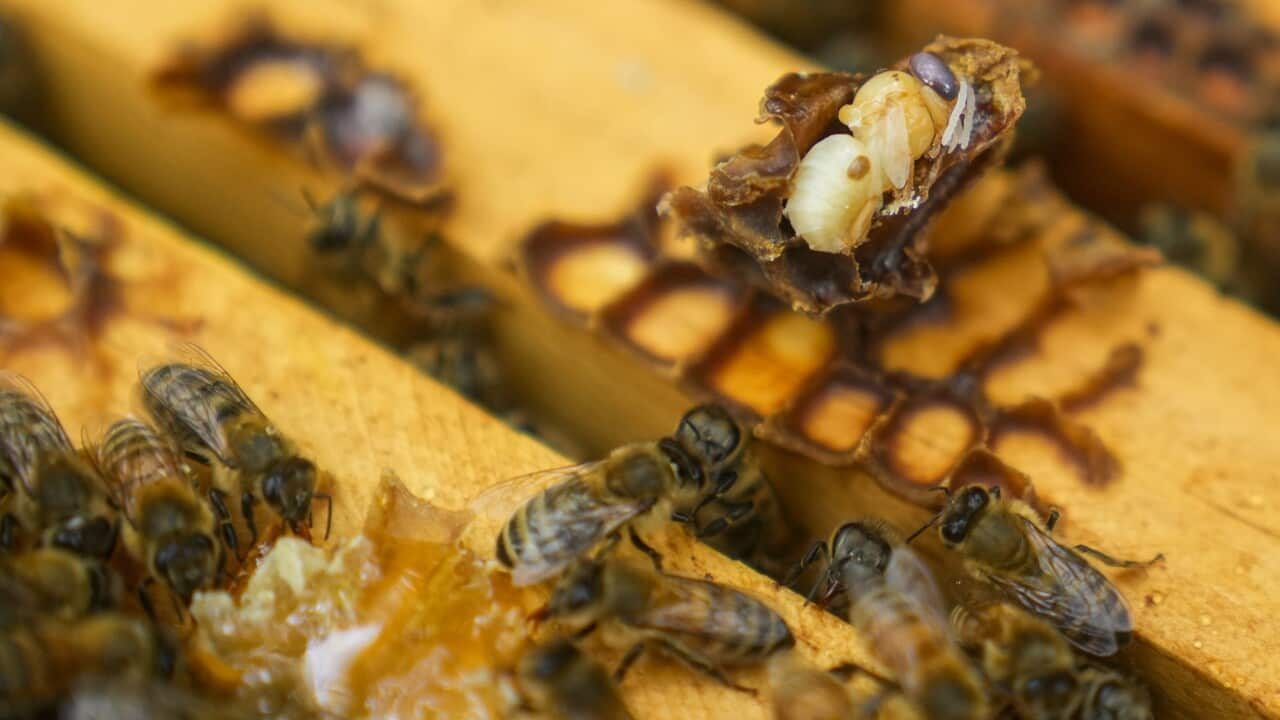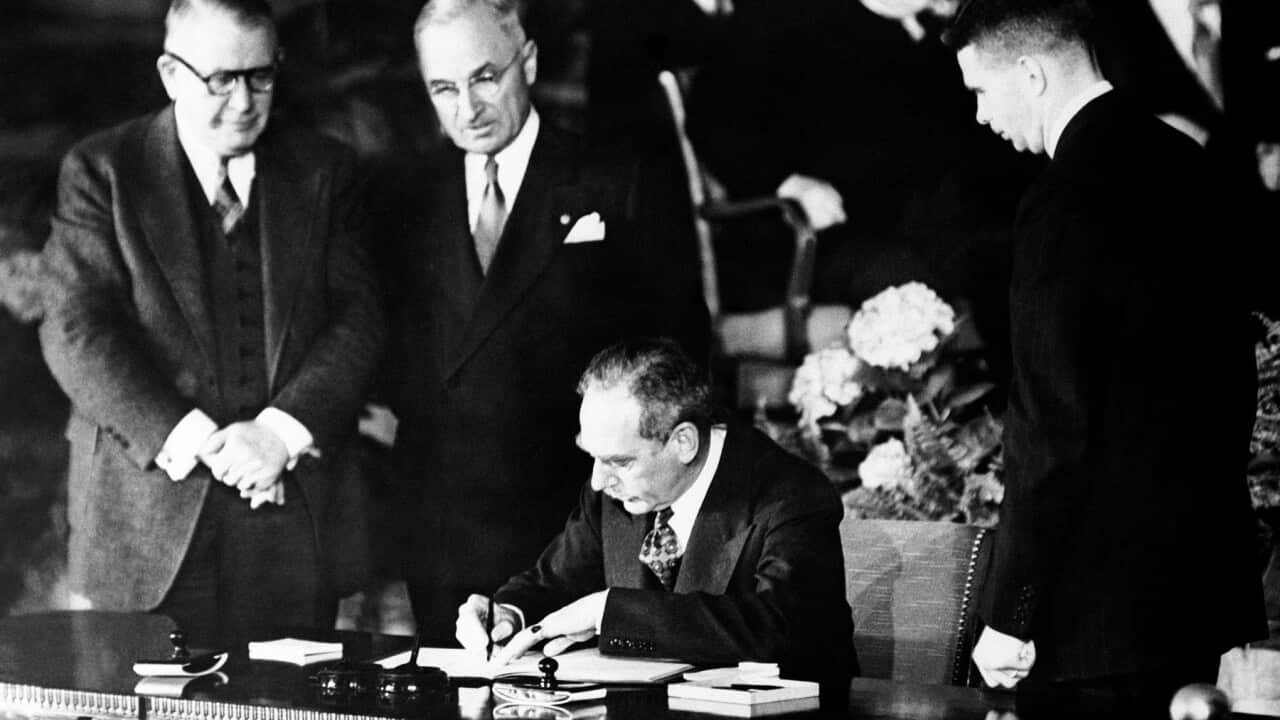Italian
"Oh, this is the airport. My friend came to see. And my brother and my sister."
Sono trascorsi 60 anni da quando Mari Paz Moreno ha lasciato la Spagna.
In cerca di indipendenza, la allora 23enne si imbarcò su un volo diretto verso l'Australia.
"They said the salaries are good and you can learn English for free then you go and work in your own choice in the work you're doing here. And that was absolutely not true. Absolutely not true."
Josefina Uribarri aveva 27 anni quando prese la stessa difficile decisione di Mari.
Ai tempi era un’addetta alle pulizie dalla paga molto bassa in Spagna.
"I had a daughter, I had a boyfriend. It was a hard thing to do that."
Tra il 1960 e il 1963, 700 donne single spagnole arrivarono in Australia.
Josefina pensava che sarebbero venute qui per lavoro... e per ammirare la natura.
"We coming to Australia but we didn't know, only we knew there were kangaroos. But when I come here I look for the kangaroos, and not here!"
Ma le donne erano state portate qui invece tramite un accordo tra i governi spagnolo e australiano, nella speranza che sarebbero diventate mogli.
La ricercatrice Natalia Ortiz ha rivelato che l'accordo si chiamava "Piano Marta".
"The first agreement between the two countries brought labour, male labour to work on the sugar cane in Queensland and they realised very quickly that those men needed something else so then they came up with a second agreement and it was this one. And the idea was to mingle with the Spanish male community or the Italian-Spanish community and bring up some relationships, weddings etcetera. Really apart from the company, it was just to make the migrants stay because a lot of them came for a couple of years and their intention was to return. And Australia wanted the migrants to stay so the best thing was to have some families here."
Josefina si sposò un anno dopo l'arrivo.
Da allora, ha vissuto sempre a Melbourne.
Anche sua sorella si è trasferita in Australia per starle vicina.
"I'm never sorry to be in Australia. I'm so happy. Since the very beginning. At the very beginning there was nostalgia and sadness but I was happy."
Per Mari, che si era stabilita a Sydney, non è stato così facile.
"For 20 years I was crying when nobody looked - nobody knew. But then I said 'I'm wasting my tears, I'm wasting my time, no more!' And I start living, dancing, everything!"
Mari ha finito per sposarsi con un uomo italiano.
Sono ancora insieme oggi.
"Cupid, with his blindfold, he got into my life and his life and what do you do? what do you do?"
Queste sono solo due delle centinaia di esperienze avute dalle donne trasportate con il "Piano Marta".
La dottoressa Ortiz ha dichiarato che continuerà a documentare e conservare le loro storie.
English
"Oh, this is the airport. My friend came to see. And my brother and my sister."
It's been 60 years since Mari Paz Moreno left Spain.
Looking for independence... the then-23-year-old boarded a flight bound for Australia.
"They said the salaries are good and you can learn English for free then you go and work in your own choice in the work you're doing here. And that was absolutely not true. Absolutely not true."
Josefina Uribarri was 27 when she made the same difficult decision as Mari.
At the time she was on a very low wage as a cleaner in Spain.
"I had a daughter, I had a boyfriend. It was a hard thing to do that."
Between 1960 and 1963, 700 single Spanish women came to Australia.
Josefina thought they were here for work... and to admire the wildlife.
"We coming to Australia but we didn't know, only we knew there were kangaroos. But when I come here I look for the kangaroos, and not here!"
But the women were actually brought here under an agreement between the Spanish and Australian governments - in the hope they'd become wives.
Researcher Dr Natalia Ortiz says that agreement was called the 'Martha Plan'.
"The first agreement between the two countries brought labour, male labour to work on the sugar cane in Queensland and they realised very quickly that those men needed something else so then they came up with a second agreement and it was this one. And the idea was to mingle with the Spanish male community or the Italian-Spanish community and bring up some relationships, weddings etcetera. Really apart from the company, it was just to make the migrants stay because a lot of them came for a couple of years and their intention was to return. And Australia wanted the migrants to stay so the best thing was to have some families here."
Josefina married a year after she arrived.
She's lived in Melbourne ever since.
Her daughter has also moved to Australia to be with her.
"I'm never sorry to be in Australia. I'm so happy. Since the very beginning. At the very beginning there was nostalgia and sadness but I was happy."
For Mari, who settled in Sydney, it wasn't as easy.
"For 20 years I was crying when nobody looked - nobody knew. But then I said 'I'm wasting my tears, I'm wasting my time, no more!' And I start living, dancing, everything!"
Mari ended up marrying an Italian man.
They're still together today.
"Cupid, with his blindfold, he got into my life and his life and what do you do? what do you do?"
These are just two of the hundreds of experiences had by women brought in on the Martha Plan.
Dr Ortiz says she'll continue to document and preserve their stories.
Report by Rachel Cary





